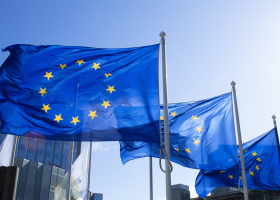What is Horizon Europe?
Horizon Europe (HE) is a programme that funds research across the European Union and some other countries, known under different names, like Associated Countries and others. Think of the French ANR and its funds opportunities. In the case of HE, the funds are disbursed by the European Commission itself, or by a number of joint undertakings between the Commission, Member States, and Industrial partners (see Partnerships further down), or yet by a number of European agencies, depending on the part of the programme to which the project belongs. Don’t get inhibited by the many acronyms of such agencies, like REA, ERCEA, HADEA, etc., as these are just administrative bodies executing the budget.
What are the places of entry for researchers?
HE has several subprogrammes and each of them is designed to fund a specific type of research, according to their respective Work Programmes. Here are the main ones, listed by the type of research you may wish to develop at the European level.
- You want to get training through mobility, as a Post-Doc or as a researcher in a sabbatical, for instance. Then the Marie Sklodowska-Curie Actions (MSCA) instrument Postdoctoral Fellowships is for you.
- You want to do research at the highest excellence level on a subject of your own choice, leading your own team of PhD students and Post-Docs. Then you should look at the European Research Council (ERC) and its Grants.
- You want to lead or to participate in a collaborative European project that increases capacity through training by research. This can be a project that trains a cohort of PhD students on a multidisciplinary subject or another one that exchanges staff between research institutions and industry. Then, again, the MSCA instruments Doctoral Networks (DN) or Staff Exchanges (SE) are for you, because MSCA is the part of HE that deals with all aspects of training through research and mobility.
- You want to lead or to participate in a collaborative project that advances knowledge in a specific area. Then you have two main possibilities:
- You are a researcher who wants to address a research problem so ambitious that it cannot be dealt with by you and your team alone. Then you may try the ERC Synergy Grants, where proposals may be in any research field and are evaluated on the sole criterion of scientific excellence.
- You see your research as capable of being part of the solution of a societal or industrial question. Then HE proposes two main types of instruments to fund this kind of projects, namely Research and Innovation Actions (RIA) and Innovation Actions (IA). Some restrictions apply, though, because the areas of societal or industrial relevance are pre-selected in the programme.
- You want to lead or to participate in a high-risk/high-gain technology driven interdisciplinary collaborative project, whose outcomes could result in business opportunities, that lay sometime in future (long or short) yet you know how to preliminarily describe them now. Then you should look at the European Innovation Council (EIC) instruments, mainly Pathfinder and Transition.
- You want to lead or to participate in a project that doesn’t fund much of your research, but allows you to get together with researchers from different areas to discuss a subject of your choice (more or less like the GDRs do in France). Then you should try and propose/join a European Cooperation in Science and Technology (COST) Action.
- You want to lead or participate in a project that increases capacity in the area of research infrastructures. Then there is a part of HE that deals exactly with that and uses instruments like the RIA described above, but also Coordination and Support Actions (CSA), meant to, well, coordinate and support the deployment of such infrastructures.
Work Programmes
Work Programmes are the official documents describing the call for proposals for each of the subprogrammes. They are usually published every two years. They are where you’ll find all the information you need in order to start your proposal.
Information about the Work Programmes can be found at the European Commission's funding portal, and all the calls for proposals can be found at calls.
A little of jargon
Now that you know more or less where to look for the funding opportunities that most suit your current research goals, let us tell you how to map the above introduction into the documents you’ll find about HE.
Horizon Europe is presented as three pillars and one transversal component, as follows.

In the first pillar the legislation that established HE put the ERC, MSCA, and the Research Infrastructures, and called it “Excellent Science”. This of course begs the question whether the other pillars are for ‘mediocre science’. The answer is not. They all focus on excellence. It’s just that the other pillars are also driven by other considerations, like industrial competitiveness or innovation.
It’s in the second pillar that we find the RIA/IA for boosting key technologies and solutions underpinning EU policies & Sustainable Development Goals on few selected areas, called ‘Clusters’. There you’ll also find something called Joint Research Centre (JRC, or CCR in French). Don’t bother. The JRC is just a department of the European Commission. It is not truly a subprogramme but appears in this pillar because it is funded by HE .
The third pillar is the one driven by “Innovation”. You’ll find the EIC there.
The COST Actions mentioned above belong in the “Widening” part of the transversal component.
Lastly, but not least, in Pillar 2, HE has also the notion of Partnerships, which are an integral part of the programme and bring together players from the economic world and the academic world, along with the European Commission, in order to help and/or implement the execution of the Work Programmes.
Technology Maturity
One last word on an important jargon. Above we mentioned ‘technology maturity’. Horizon Europe is very specific about that and call it Technology Readiness Level, known as TRL. Levels go from 1 to 9, depending on the distance the technology stemming from your research is from market deployment (9 is closest). The following definitions of TRLs are given by HE, recognising that there are important differences between technological fields:
- TRL1 - basic principles observed
- TRL2 - technology concept formulated
- TRL3 - experimental proof of concept
- TRL4 - technology validated in lab
- TRL5 - technology validated in relevant environment
- TRL6 - technology demonstrated in relevant environment
- TRL7 - system prototype demonstration in operational environment
- TRL8 - system complete and qualified
- TRL9 - actual system proven in operational environment
A rough correspondence can be established between the HE Pillars and expected TRLs, with lower TRLs usually pertaining to Pillar 1 and higher TRLs usually pertaining to Pillar 3, with Pillar 2 usually expecting mid TRLs. However, exceptions to this rule-of-thumb abound and one cannot establish a clear rule regarding expected TRLs by sub-programme. For example, the EIC, in Pillar 3, aims to fund projects both in low TRLs (EIC Pathfinder) and high TRLs (EIC Transition and EIC Accelerator).
Correspondant Europe
If you have questions, don’t hesitate to contact your laboratory’s Correspondant Europe (each UMR CNRS has one such person).
We do hope that this information helps you finding your way in the HE jungle. If you see some way to improve this page, or any question, please send us an email.













